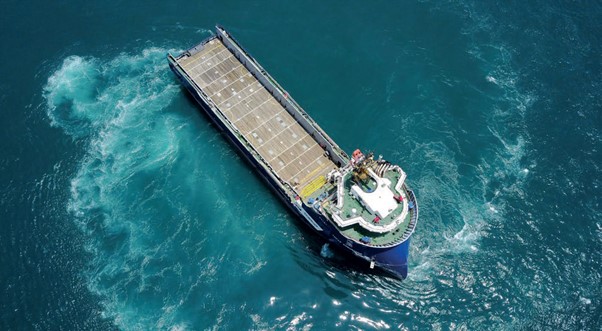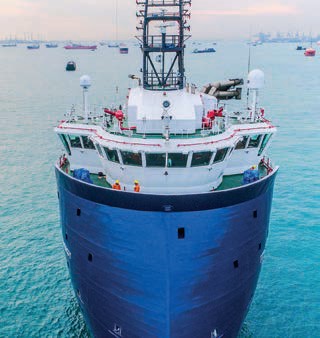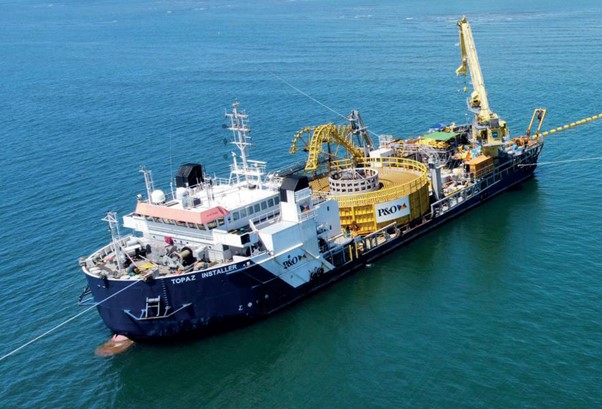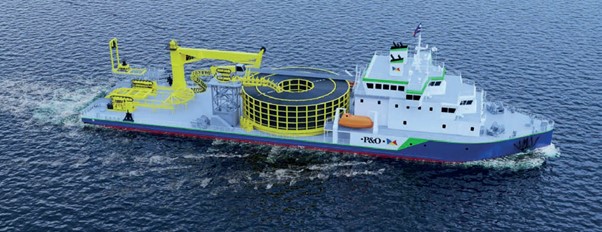P&O Maritime Logistics unveils ambitious Decarbonisation plan.
5 March 2024P&O Maritime Logistics unveils ambitious Decarbonisation plan.
P&O Maritime Logistics (part of DP World), based in Dubai, which focuses on offshore energy, port services and logistics has unveiled plans to implement an ambitious decarbonisation pathway in an industry whitepaper
Capturing the essence of this journey, Benjamin Neal’s, head of HSSEQ, whitepaper entitled: ‘Developing P&O Maritime Logistics’ Decarbonisation Pathway’, addresses the multifaceted challenges and less-discussed obstacles to implement this strategy.
The pathway not only reaffirms the company’s commitment to be carbon neutral by 2040 and generate net-zero carbon emissions by 2050 but echoes DP World’s overarching mission to redefine global trade and logistics through accelerated innovation and responsible practices as outlined in its ‘Our World, Our Future’ strategy.
Highlighted by the fourth International Maritime Organisation Greenhouse gases (IMO GHG), projecting a 90% to 130% increase in maritime GHG emissions by 2050 without major decarbonisation efforts, underscores the urgency of addressing challenges and prioritizing decarbonisation efforts.
Among these priorities, is the identification of alternative fuel availability as a major concern. With extensive debate around alternative fuels such as methanol, ammonia, biofuels, hydrogen fuel cells, batteries, and nuclear energy, P&O Maritime Logistics acknowledges the need for more research to assess the suitability, availability, and practicality of these fuels in different operational regions.
“Our aspirations extend far beyond business success. We are embarking on a transformative journey, carving a sustainable path for the maritime industry’s future. By charting a strategic course that addresses challenges head-on and leverages opportunities, we are not just navigating change; we are leading it,” said Martin Helweg, CEO P&O Maritime Logistics.
The company is also tackling the challenge of navigating diverse regulatory environments. Operating in multiple countries and regions, it is subject to a wide array of environmental regulations and standards, presenting both challenges and opportunities.
P&O Maritime Logistics emphasises proactive engagement, internal expertise, and the establishment of cross-functional collaborations as essential components in navigating this complex regulatory landscape.
The maritime offshore business model’s focus on short-term contracts and cost efficiency poses a significant hurdle to decarbonisation efforts. It recognises the need for alternative contract models and business approaches that provide stability and incentives for decarbonisation investments.
P&O Maritime Logistics also calls for the integral role of the human element in the decarbonisation journey. Clear communication, education, and engagement form the foundation of the company’s pathway, fostering a culture of environmental responsibility. Cross-functional collaboration, rewards for innovative thinking, and leadership commitment are viewed as vital components in achieving its decarbonisation goals.
By leveraging internal resources, engaging with regulatory opportunities, and nurturing a culture of innovation, the company is not only paving the way for a more sustainable future but inspiring industry players to join the transformative change.
Last year, the company announced plans to convert one of its Multi-Carrying Vessels (MCV’s) into a Cable-Laying Vessel (CLV). Powered by alternative energy, the first-of-its-kind in its portfolio, expanding its specialised offshore products and services.
Set to start operations in the third quarter of 2024, the conversion aligns with P&O Maritime Logistics’ commitment to decarbonising the industry by moving towards zero-carbon operations. To achieve these ambitious goals, the company’s newly converted vessel will be equipped with a state-of-the-art battery system, as well as a low fuel consumption propulsion layout for green methanol fuel.
CLV will give P&O Maritime Logistics’ customers the ability to connect offshore structures and bring offshore energy onshore by installing export and inner array cables across vast distances. The company anticipates one of the main uses of the vessel will be to connect offshore wind farms with the mainland.
“The conversion of our vessel is a real step change. It means, apart from expanding our existing services and products into a more specialised offering, we can make a positive contribution to the decarbonisation of our industry. One way of doing this is by using alternative energy to power the converted vessel,” said Helweg.
“The other important contribution is that the Cable Laying Vessel will predominately support the construction, development, and maintenance of existing and prospective wind farms. Lastly, and by repurposing an existing vessel, we are able to extend the lifetime of this particular product quite significantly to keep up with the increasing demand in the sector
The conversion builds on the company’s recent success in Taiwan with the Topaz Installer. The newly converted vessel will have the ability to host up to 64 seafarers and features a single basket cable carousel with an outside diameter of 24 meters. With this astounding span, a core height of 5.5, as well as a 30 tons SWL AHC subsea crane, the vessel is a testament to P&O Maritime Logistics commitment to adapt its portfolio for future energy needs.



